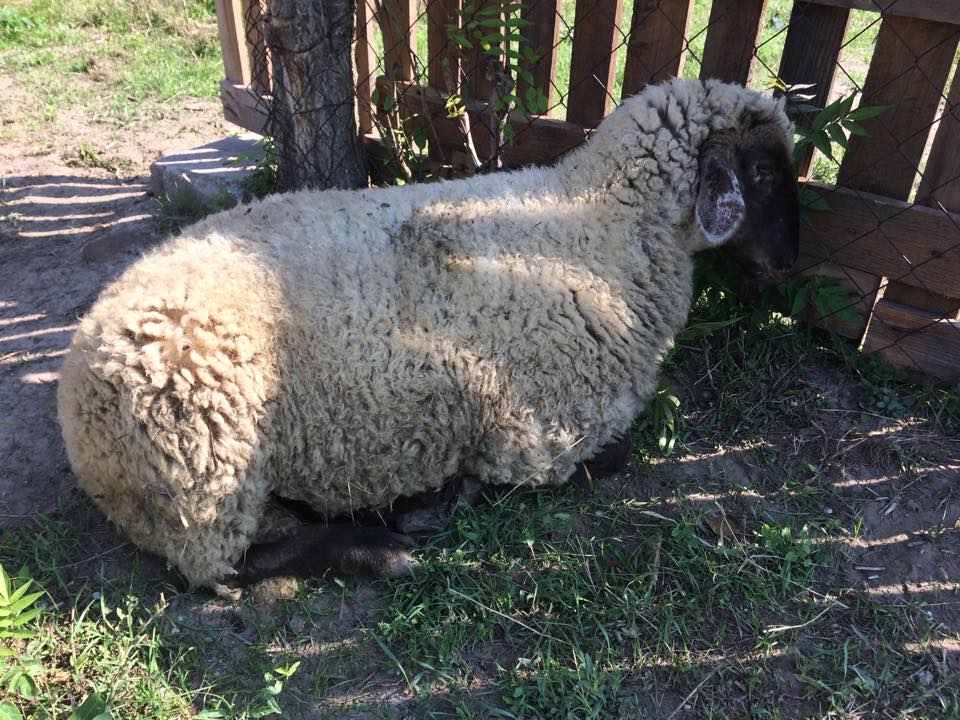Tsigai on:
[Wikipedia]
[Google]
[Amazon]
 Tsigai is a
Tsigai is a
 Tsigai is a
Tsigai is a Romanian
Romanian may refer to:
*anything of, from, or related to the country and nation of Romania
**Romanians, an ethnic group
**Romanian language, a Romance language
***Romanian dialects, variants of the Romanian language
**Romanian cuisine, traditional ...
sheep
Sheep or domestic sheep (''Ovis aries'') are domesticated, ruminant mammals typically kept as livestock. Although the term ''sheep'' can apply to other species in the genus ''Ovis'', in everyday usage it almost always refers to domesticated s ...
breed
A breed is a specific group of domestic animals having homogeneous appearance (phenotype), homogeneous behavior, and/or other characteristics that distinguish it from other organisms of the same species. In literature, there exist several slig ...
.
History
The Țigaie breed is part of the domestic sheep species (Ovis aries). The breed originates from sheep domesticated in the area of the eastern part of the Black Sea and through migration over time, through the north and south of the sea reaching the south of Moldova and the area of Dobrogea, where it began to form as a local breed, being one of the first breeds of sheep from Europe. By some authors it is considered an old race, formed early, not being a primitive race, but still unimproved according to modern breeding science, based on population genetics. From the place of formation in southern Moldavia and Dobrogea, Țigaia also spread to Transylvania by the Mocans who practiced transhumance, being acclimatized in the mountain area of the Curbura Carpathians (Săcele-Covasna, Brețcu, Bran, Teșila, Vrancea, Plăiesi, LipTranshumance Romanian shepherds have dispersed the Șigaie race in Southern Ukraine, Russia, Bulgaria, Slovakia and the Czech Republic, in Vojvodina and the Pannonian Plain since time immemorial. In Turkey, the Tiger breed was imported from Romania and is currently known as Kivircic.Starting after the 18th century, the development of the textile industry of linings, thick fabrics for military uniforms, blankets and hats, in the city of Brașov and in neighboring towns such as Prejmer, Covasna also increased the demand for semi-fine wool, characteristic of the țigaie sheep, contributing to the formation of a uniform population of țigaie in these areas.).Properties
Generally the sheep has long dangling ears, white wool with some black thread, and its legs and head are black or dark brown. Its skin is dark and the body parts which are covered withkeratin
Keratin () is one of a family of structural fibrous proteins also known as ''scleroproteins''. Alpha-keratin (α-keratin) is a type of keratin found in vertebrates. It is the key structural material making up scales, hair, nails, feathers, ho ...
are dark grey. The male Tsigai can sometimes grow horns.
The Tsigai only lambs once a year, and rarely bears twins.
There are two different breeds of Tsigai:
"Old" or native Tsigai
The "old" breed is bred for its milk, meat and wool, which is used intextile industry
The textile industry is primarily concerned with the design, production and distribution of yarn, cloth and clothing. The raw material may be natural, or synthetic using products of the chemical industry.
Industry process
Cotton manufacturi ...
. The male Tsigai's shoulder height is and the female's is . The Tsigai is milked for 5–6 months, and this breed can yield 40 to 60 litres of milk. The lambs are sandy grey in colour. There are around 10,000 females and 50 males in Hungary, both in the Körös-Maros National Park
Körös-Maros National Park is one of the 10 national parks in Hungary (area 501.34 km2), located in Békés county, in the Southern Great Plain. The park was created in 1997 for the protection of birds.
Körös-Maros National Park has a nu ...
and in private breeders' farms.
Domestic Tsigai
Since 1999 the domestic Tsigai has been recorded as a separate breed to the "old" Tsigai, and has been a protected breed since 2008.The domestic breed is bred for its milk. The milk of the Tisgai is used incheesemaking
Cheesemaking (or caseiculture) is the craft of making cheese. The production of cheese, like many other food preservation processes, allows the nutritional and economic value of a food material, in this case milk, to be preserved in concentrat ...
. Its body size is much bigger than the "old" Tsigai; the male's shoulder height is and the female's is . In the milking period it yields of milk. Lambs are born with a black fleece.
References
{{ReflistSources
*Történelmi állatfajták enciklopédiája (encyclopedia book) by János Tőzsér, Sándor Bedő. Released by Mezőgazda kiadó, Budapest, 2003 Sheep breeds originating in Hungary Sheep breeds